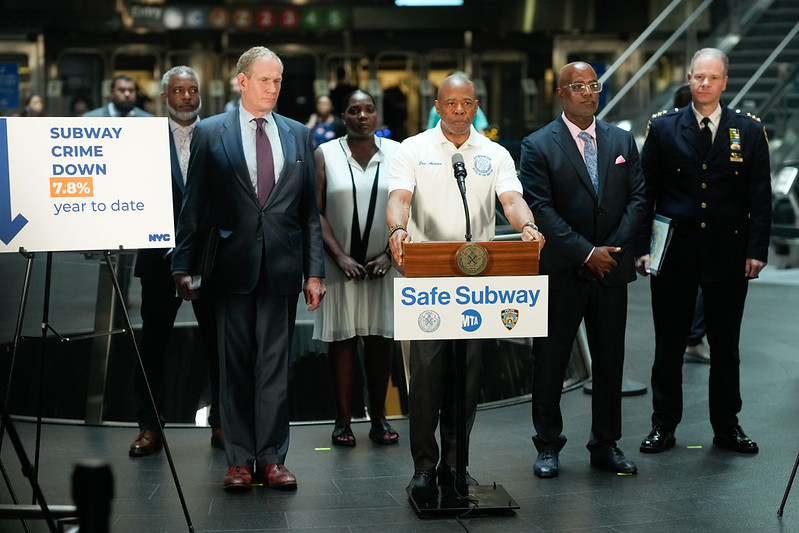The bad news first: While the city swelters, some subway service has been melting down. Unless you think you’re in a combination sauna-steam room at a resort, waiting 20 minutes on a 95-degree platform is no fun.
MTA Chair Janno Lieber put the problem bluntly, while throwing a bit of mid-summer shade at Gov. Hochul, who delayed congestion pricing: “This is what takes place when you underinvest in an essential infrastructure system that is 100 years old and getting older all the time.”
The good news next: The subways — which are much safer than their reputation, but have seen a scary uptick in violent assaults and murders in recent years — are getting safer. Mayor Adams and Hochul teamed up this week to tout an overall decline of 7.8% so far this year compared to last, with still larger declines in recent weeks.
The governor may think ordering the National Guard to check bags back in March has something to do with it. Far likelier it’s the result of the mayor adding additional cops underground, which began in February. Summonses and arrests are way up over their numbers two years ago. If a surge of cops is what’s necessary to keep the trendline moving in the right direction, don’t relent.
Some of those cops should more smartly (and evenly) enforce farebeating laws, using tickets first and arrests only in cases where the people they catch have outstanding warrants or are carrying illegal weapons.
What will hardly help at all, and what is most certainly not worth the time and money and attention it’s getting, is the flashy new scanning technology by Evolv Technology that the Adams administration is rolling out in a pilot program.
The scanners are better than standard-issue metal detectors; they use artificial intelligence to spot guns and knives and beep only when they think someone is carrying a weapon. Given the speed at which they work, people can in theory just walk right through; there won’t eternal choke-point queues like at the airport.
But the practical problems with counting on these as a solution for underground crime are many.
They have to be staffed by cops at all times — because if and when they beep, someone’s got to take the person aside and check for any weapon. If scanners get installed at basically every subway entrance, that adds up to a crazily expensive proposition.
If they’re only at a small fraction of subway entrances, they’re easy for a determined gun-toter to avoid — and therefore of limited utility.
The most important places to put these gizmos would be at the busiest stations, so they scan thousands upon thousands of people flowing through turnstiles. If all those people are flowing through to catch their trains and the devices get a hit, how exactly is a cop supposed to quickly identify the right person without grinding rush hour to a halt?
It all gets thornier still since previous pilot tests have revealed high false-positive rates, meaning the devices far too often alarm for innocuous objects.
Finally, crime underground isn’t mainly a gun problem. When people feel insecure, it’s most often because of unstable people with serious mental illness, or because of standard-issue assault and robberies that don’t depend on a perpetrator being armed.
The subways need good service and good policing. They don’t need costly tech like this.
